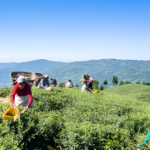As a child, I fondly remember foraging for the delectable Neplese Bay Berry, known locally as Kaafal, during our family’s grazing trips to nearby forests. Later, during my college days in Kathmandu, I would scour the local markets to find this fruit and savour its one-of-a-kind flavor. Even looking at a picture of Kaafal makes my mouth water, as I am a huge fan of its unique taste.
Sadly, the availability of Neplese Bay Berry has dwindled in recent years, and it is disheartening to witness the decline of this once-plentiful wild fruit. However, the significance of wild fruits in Nepal goes beyond just their delicious taste. These traditional sources of nutrition and cultural significance are a part of our heritage that we must preserve.
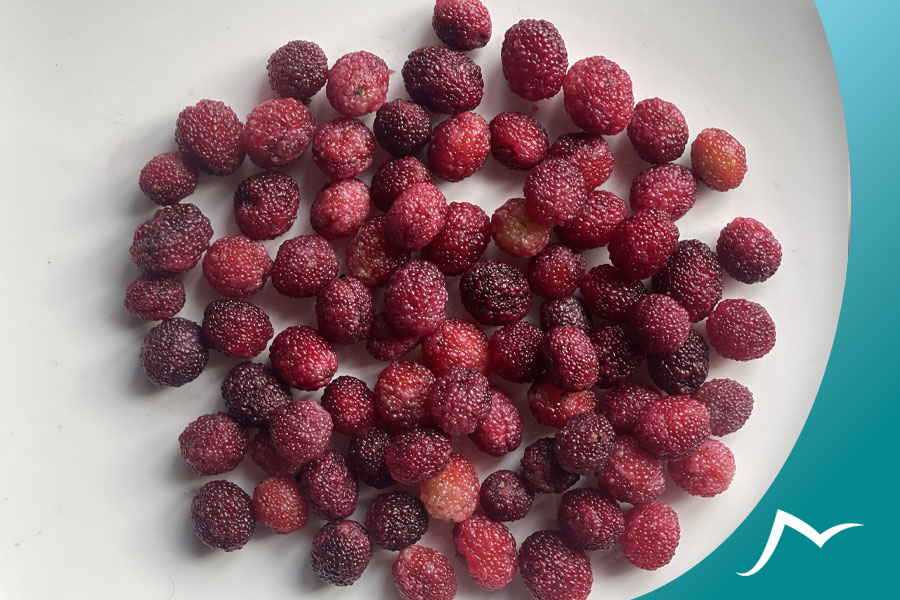
This blog post will delve deeper into the wild fruits of Neplese Bay Berry in Nepal. We will explore its physical characteristics, nutritional value, culinary uses and recipes, cultural significance, and why it’s worth preserving. Let’s dive in!
Kaafal (Neplese Bay Berry): Characteristics and Nutritional Value
As someone who has enjoyed Neplese Bay Berry(Kaafal), for many years, I can attest to its unique characteristics and nutritional value. This wild fruit is small and round, with a fuzzy exterior that hides its sweet and tangy flavor. Its distinct taste distinguishes it from other fruits in Nepal’s forests.
Regarding nutrition, Neplese Bay Berry is a good source of vitamins and minerals. It is rich in vitamin C, which helps boost immunity and contains antioxidants that protect against cell damage. Additionally, Bay Berry is a good dietary fibre source, supporting digestive health.
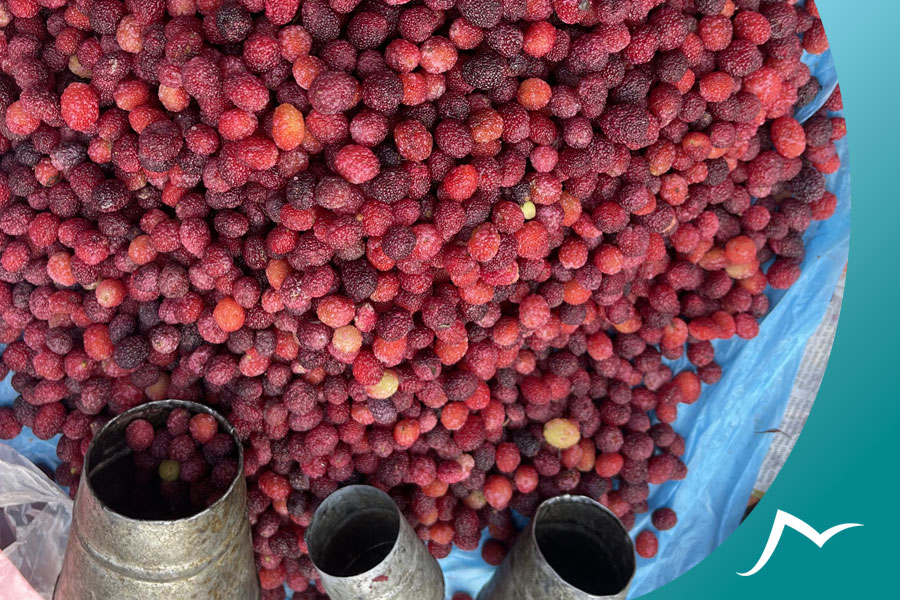
Compared to other wild fruits in Nepal, Neplese Bay Berry stands out for its versatility. It can be eaten fresh or dried and is often used to make jams, jellies, and wine. It is also used in traditional medicine to treat various ailments like diarrhea and fever.
As per research, consuming Bay Berries in good amounts has several health benefits. Its high vitamin C content helps to maintain healthy skin and hair, while its fiber content promotes digestive regularity. It also has anti-inflammatory properties that can help reduce swelling and pain.
Neplese Bay Berry and the Richness of Wild Fruit Diversity in Nepal
I have been fascinated by the incredible diversity of wild fruits found throughout the country.
Bay Berry, in particular, holds a special place in Nepalese culture and cuisine. Its distinct flavor and texture make it a favorite among locals, often used in traditional dishes and snacks.
But Neplese Bay Berry is just one of many wild fruits found in Nepal. There are countless others, each with its distinct characteristics and uses. Nepal’s wild fruits are astounding, from the nutritious and antioxidant-rich Aiselu or Himalayan Raspberry to the sweet and juicy Lapsi, or Nepalese Hog Plum.
However, the increasing loss of natural habitats and biodiversity is threatening the availability and diversity of these wild fruits. We must take steps to preserve and promote the biodiversity of Nepal’s wild fruits for their cultural significance and nutritional and economic value.
As someone who has had the pleasure of experiencing the richness of Nepal’s wild fruit diversity firsthand, it is our responsibility to protect and nurture these valuable resources for future generations to enjoy.
Culinary Uses and Recipes Using Neplese Bay Berry
I can attest to the fruit’s versatility in Nepali cuisine. One of the most common ways to consume Bay berries is by eating fresh ripe fruit from the tree. However, Bay Berries can also be used in various traditional Nepali dishes. For example, in some regions, Neplese Bay Berry is used in a chutney by grinding the fruit with spices and herbs.
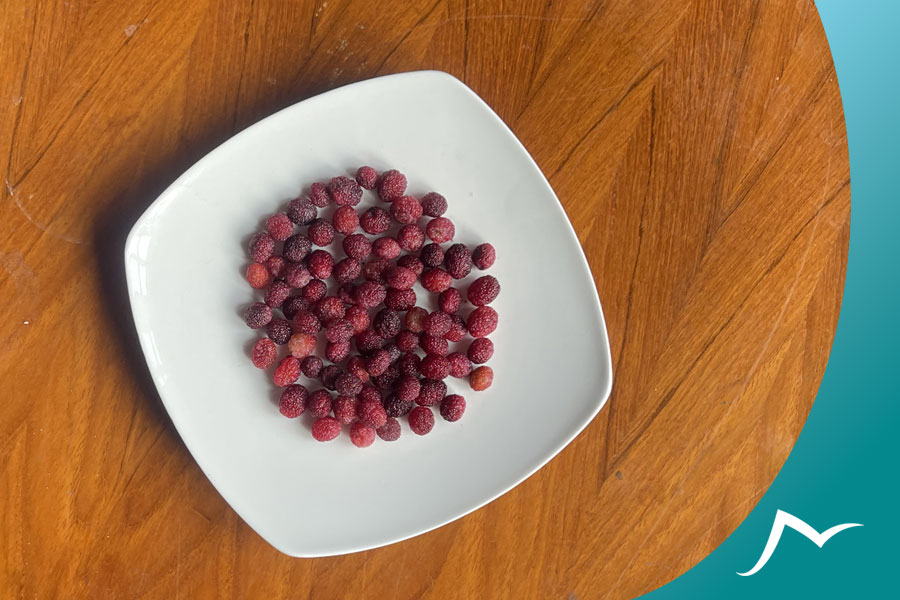
One of my favorite Neplese Bay Berry-inspired recipes is a dessert called Kaafal Ko Achaar. This dish involves boiling the Bay Berry with jaggery (unrefined sugar) and spices until it becomes a jam-like consistency. This sweet and tangy mixture is served as a dessert, often alongside a scoop of creamy yogurt.
If you’re looking for a more savory recipe, consider trying out Kaafal Ko Tarkari, a curry made with Bay Berries and potatoes—the fruit’s tangy flavor pairs perfectly with the hearty potatoes and fragrant spices used in the dish.
When cooking with Bay Berries, handling the fruit with care is important as it can be delicate and easily bruised. You can store the fruit in the refrigerator or freezer to preserve it. Alternatively, you can sun-dry the fruit, enhancing its flavor and making it easier to store. The Cultural Significance of Bay Berry and Other Wild Fruits in Nepal
I have witnessed firsthand the cultural significance of wild fruits like Bay Berry. These fruits are not just a source of nutrition but also an important part of Nepali culture, art, and media. From traditional folk songs to modern literature, Bay Berries and other wild fruits have been represented in various forms of Nepali art.
Moreover, the historical and cultural significance of Bay Berries and other wild fruits in Nepal must be addressed. These fruits have been a staple food for many indigenous communities for centuries. They have played a vital role in the local economy, as well as in traditional medicine and rituals.
Today, there is growing recognition of the potential of wild fruits like Bay Berry as a gourmet food and tourism attraction in Nepal. With its unique flavor and nutritional benefits, Neplese Bay Berry has the potential to become a signature ingredient in Nepali cuisine. It can also be used to promote agro-tourism in the country, providing economic benefits to local communities.
To fully harness the cultural and economic potential of wild fruits like Neplese Bay Berry, preserving and promoting their biodiversity in Nepal is important. As a lover of Nepali culture and cuisine, I am passionate about promoting Nepal’s rich diversity of wild fruits and ensuring their place in its cultural heritage.
Neplese Bay Berry: Why it is Worth Preserving
Bay Berry(Kaafal) is a wild fruit that holds a special place in Nepalese culture and cuisine. It is a fruit I have grown up with and continue to cherish as an adult. The unique taste and cultural significance of Bay Berry makes it an essential part of Nepali culinary traditions.
In recent years, however, the availability of Neplese Bay Berry has declined, leading to concerns about its preservation. It is important to recognize Bay Berries and other wild fruits’ role in Nepali culture and to understand why it is worth preserving them.
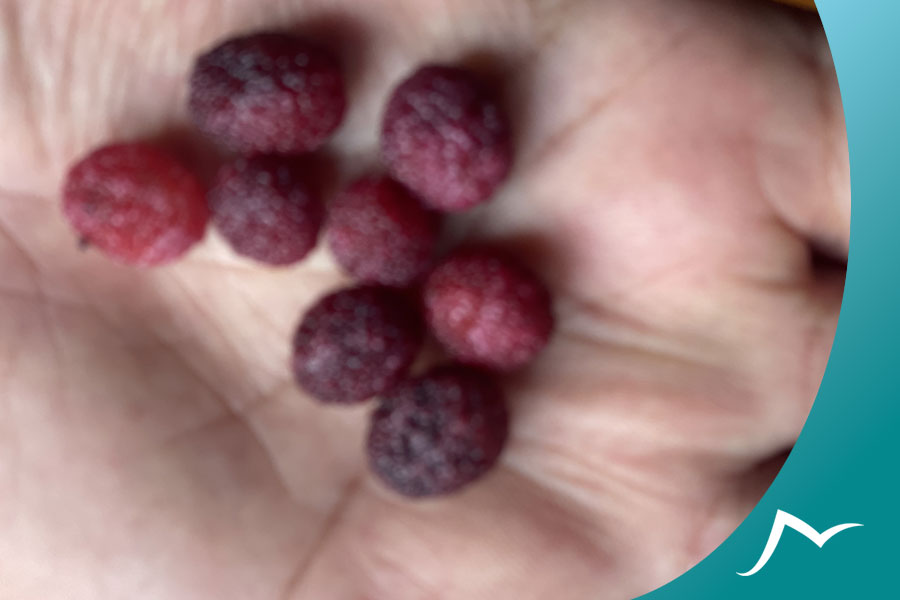
Beyond its cultural significance, Bay Berry has numerous health benefits. It is rich in antioxidants, vitamins, and minerals. Studies have shown that consuming Bay Berry can help lower blood pressure, improve digestion, and boost immunity.
Furthermore, the abundance and variety of wild fruit in Nepal make it a unique and valuable resource. Wild fruits are an important source of nutrition and livelihood for many communities in Nepal. Preserving and promoting the diversity of wild fruits in Nepal is essential for cultural and economic reasons.
As a lover of Neplese Bay Berry and proud Nepali, we are responsible for protecting and preserving this precious fruit. By doing so, we honor our cultural heritage and ensure a healthy and sustainable future for generations to come.
FAQs
What is Neplese Bay Berry?
Neplese Bay Berry, also known as Kaafal in Nepali, is a wild fruit found in the forests of Nepal.
What does Neplese Bay Berry taste like?
Neplese Bay Berry has a unique sweet and tangy taste.
How is Bay Berry used in Nepali cuisine?
Neplese Bay Berry is used in traditional Nepali dishes such as achar (pickle) and chutney.
What are the nutritional benefits of Bay Berry?
Bay Berry is high in vitamin C, antioxidants, and fiber.
What other wild fruits can be found in Nepal?
Nepal has various wild fruits, including apricots, plums, and Himalayan blackberries.
How can I find Neplese Bay Berry in the market?
Neplese Bay Berry is not commonly found in markets but can sometimes be found in local street markets.
Can Neplese Bay Berry be eaten raw?
Yes, Neplese Bay Berry can be eaten raw but is commonly used in cooked dishes.
How can I preserve Bay Berry?
Bay Berries can be preserved by drying, pickling, or making it into jam.
How can I support the conservation of wild fruits in Nepal?
Supporting local conservation organizations and promoting wild fruits in cuisine can help preserve wild fruit biodiversity in Nepal.
Conclusion
In conclusion, my experience with Neplese Bay Berry(Kaafal) has been delightful. Its unique taste and cultural significance have made it a favorite among Nepali people for generations. However, the decline in the availability of Bay Berries and other wild fruits of Nepal is alarming. We must take action to preserve and promote the biodiversity of these fruits, not just for their delicious flavor but also for their nutritional and cultural value.
I urge everyone to support efforts towards the conservation and promotion of wild fruits, not just in Nepal but around the world. Let us retain these precious sources of nutrition and cultural heritage. Let’s work together to ensure that future generations can enjoy the same pleasures of wild fruits that we have experienced.

